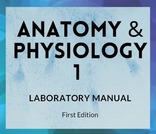
Laboratory manual for undergraduate Anatomy & Physiology 1
- Subject:
- Anatomy/Physiology
- Biology
- Health, Medicine and Nursing
- Material Type:
- Activity/Lab
- Reading
- Teaching/Learning Strategy
- Textbook
- Author:
- Julie Robinson
- Date Added:
- 06/05/2021

Laboratory manual for undergraduate Anatomy & Physiology 1
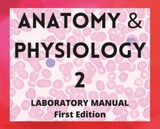
Laboratory manual for undergraduate Anatomy & Physiology 2

Teaching and learning resources for A&P 2. Please check back as I intend to add more.
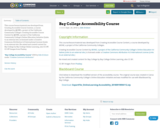
This course/lesson/material was developed from Creating Accessible Course Content, a course developed by @ONE, a project of the California Community Colleges.
Creating Accessible Course Content by @ONE, a project of the California Community College's Online Education Initiative (Links to an external site.) is licensed under a Creative Commons Attribution 4.0 International License (Links to an external site.)
Re-mixed and created content for Bay College by Bay College Online Learning, also CC-BY.
CC-BY Images from Pixabay.

This module entitled, Buy This Buy That, is the seventh of 16 modules in the ESL course. Students learn names of shopping items for different purposes – groceries, clothing, home, garden, etc. Higher level critical thinking activities and discussions are included in the lesson plans. Extensive vocabulary is provided to strengthen students’ word power especially to name everyday items to buy. The role-play activity mirrors actual experience at the store. Descriptive writing opportunities are provided in this module.
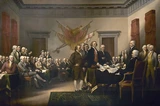
From indigenous people through reconstruction this course is based on The American Yawp Textbook chapters 1-15. (The American Yawp: A Massively Collaborative Open U.S. History Textbook by Stanford University Press is licensed under CC BY-SA 4.0) This course incorporates additional readings and videos and includes essays for assessment of student knowledge.There is a Perusall companion course available for the readings in this course. See the Instructor Notes in the "About this Course" Section.

The materials are designed for adult learners or high school students who are beginning their study of Chinese. The content, which includes lesson texts, exercises, and vocabulary, is provided in traditional characters with simplified character annotations for the vocabulary.The focus of these materials is on conversations and practical topics.This OER creation is sponsored by the Weatherhead East Asian Institute National Resource Center (NRC) grant at Columbia University.

This is a compilation of open essays to supplement an argument and rhetoric class.

The online geology lab for community college students was developed during two years of forced online synchronous learning brought on by the COVID-19 pandemic. This open educational resource is a cohesive laboratory manual intended for two-year, non-major college students from the New York area. Each lab is accompanied by a Teacher’s Guide and an online answer sheet (formatted for the Blackboard learning management system). A multiple-choice format is used for many questions, making the labs easy to grade.

Powerpoint presentation promoting OER in community colleges.

From post-reconstruction to the recent past, this course is based on The American Yawp Textbook chapters 16-30. (The American Yawp: A Massively Collaborative Open U.S. History Textbook by Stanford University Press is licensed under CC BY-SA 4.0) This course incorporates additional readings and videos and includes essays for assessment of student knowledge.There is a Perusall companion course available for the readings in this course. See the Instructor Notes in the "About this Course" Section.
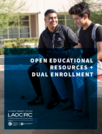
This practice brief provides guidance to help K12 and community college dual enrollment program instructors and administrators identify and implement programs using open educational resources (OERs). This practice brief focuses on how OERs can remove potential barriers to students’ access to higher education by promoting textbook affordability for all students. As high schools typically cover the cost of textbooks and other course materials, the costs of college textbooks may deter high school students from considering dual enrollment programs, particularly low-income students. The integration of OERs in dual enrollment courses may help mitigate this barrier.
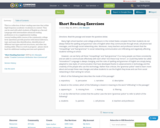
This is a collection of short reading exercises that utilize high frequency academic vocabulary in context. They can be used with adult students of English as a Second Language with intermediate-advanced reading proficiency or in a supplemental reading course/reading skills course at the community college level. Questions provide practice with lexical inference, topic and main idea identification, identification of different text types and text structures, and other key reading skills. (This is a work in progress - please check back for additional reading exercises and updates!)

My passion is to help students seamlessly transfer from their original dream school (in one of the City Colleges of Chicago) to their four-year dream schools and to obtain funding. For that purpose, I have composed a book entitled Transfer Like a Rockstar! Tips on Transferring from Community College to Your New Four-year Dream School. I hope that you enjoy it!